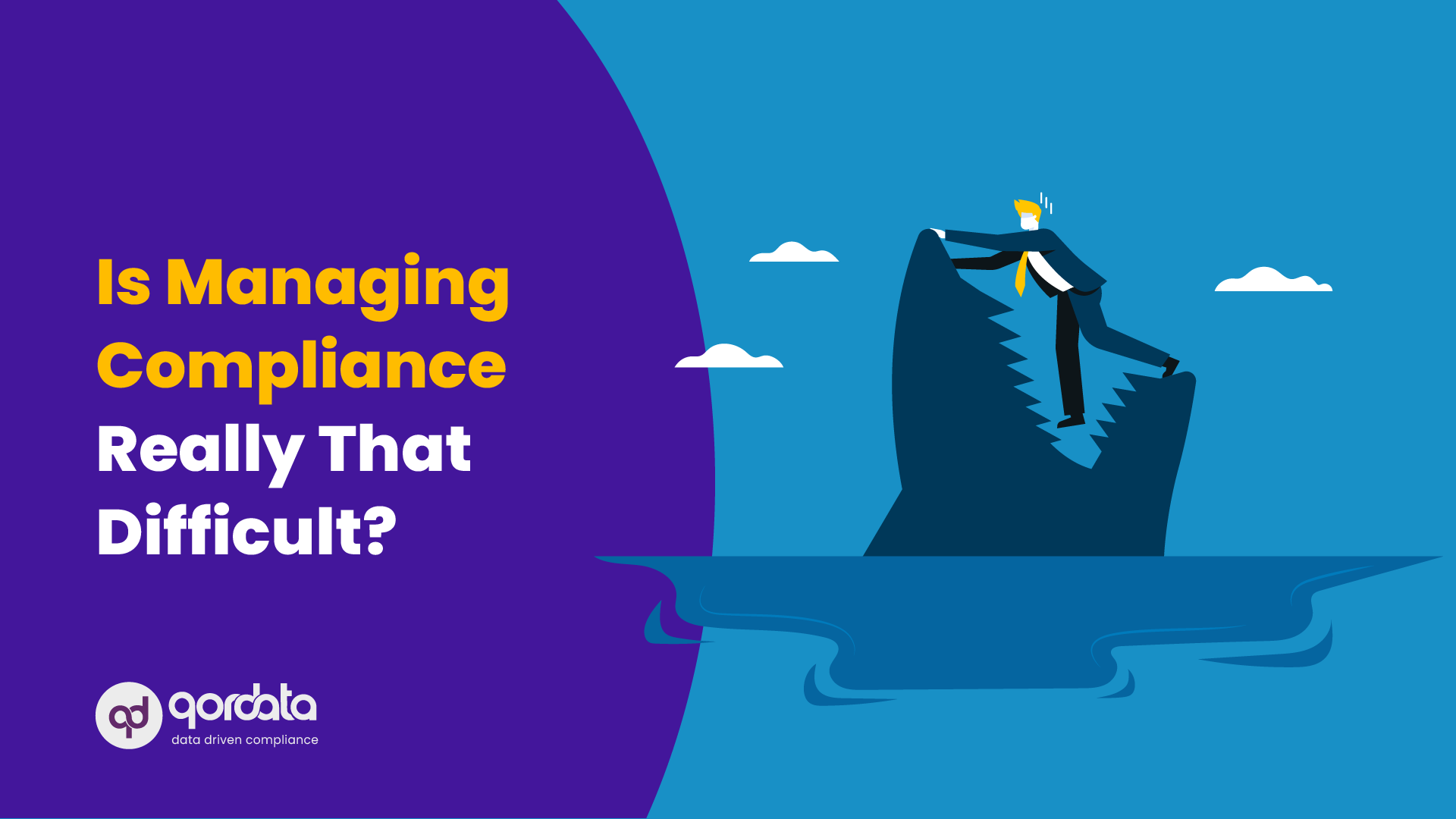Table of Contents
ToggleAs a compliance professional, you navigate a complex web of laws, regulations, and ethical considerations daily, safeguarding both your company’s reputation and the well-being of patients and consumers.
But what makes a compliance program truly effective? How can you ensure that your efforts not only meet the necessary standards but also contribute to the growth and sustainability of your organization?
Join us on this journey as we delve into the seven essential elements that underpin a robust and agile compliance program designed specifically for the life sciences industry.
From a solid foundation of adherence to all applicable laws and regulations to harnessing the power of data-driven insights, we’ll explore the key components that set the stage for compliance success. Let’s embark on this exploration together and empower you to reach new heights in your role as a compliance professional.
Table of Content
-
What is Life Sciences Compliance?
-
Compliance Program: In A Nutshell
-
The Purpose of a Compliance Program
-
The 7 Elements of An Effective Compliance Program
What is Life Sciences Compliance?
Compliance within the life sciences industry embodies the critical commitment to upholding and adhering to laws, regulations, and standards that govern every facet of medical product development, manufacturing, marketing, and distribution. It serves as the bedrock for safeguarding the well-being of patients and the integrity of clinical trials.
Importance of Compliance
The significance of compliance in life sciences cannot be overstated. It not only ensures the delivery of safe and effective medical treatments but also safeguards a company’s reputation and integrity.
Consequences of Non-Compliance
Non-compliance carries severe repercussions, ranging from legal penalties and fines to damage to a company’s brand and reputation in the market.
Furthermore, it can lead to delayed product approvals, increased regulatory scrutiny, and even potential harm to patients or participants in clinical trials.
Here’s a more detailed overview of the risk that non-compliance poses for life sciences companies:
-
Financial Risks: Non-compliance with regulations and guidelines can lead to significant financial risks for companies, such as fines, penalties, and legal fees.
-
Reputational Risks: Compliance failures can have a significant impact on a company’s reputation. Negative media attention and public perception can damage a company’s reputation and result in a loss of trust.
-
Legal Risks: Non-compliance can result in serious legal risks for companies, such as civil and criminal penalties, lawsuits, and regulatory enforcement actions. These risks can lead to significant financial costs for the company and may limit opportunities for growth and expansion.
Role of Compliance Professionals
Compliance professionals play a pivotal role in the life sciences landscape. They are responsible for developing, implementing, and overseeing comprehensive compliance programs that encompass all aspects of the industry.
Their expertise ensures that companies adhere to regulations, fostering a culture of ethical behavior, and mitigating risks associated with non-compliance.
Regulatory Authorities and Compliance
Regulatory authorities, such as the DOJ, OIG, and other agencies, closely monitor and evaluate compliance within the life sciences industry.
They view compliance not merely as a regulatory requirement but as an ethical imperative, central to the industry’s mission of improving healthcare while safeguarding the interests of patients and the broader public.
Augment Your Compliance Program Capabilities with Our Data-Driven Compliance Platform
What Is a Life Sciences Compliance Program
A life sciences compliance program is a comprehensive framework that integrates several vital aspects of compliance within the industry. It serves as a cohesive system of processes, policies, and procedures, unifying compliance efforts across various departments.
This ensures consistent adherence to industry regulations and ethical standards. The program operates as a dynamic entity applicable to every sector within a life sciences organization. Key Components of a Life Sciences Compliance Program:
-
Written Policies and Procedures
-
Oversight and Governance
-
Training and Education
-
Reporting and Investigations
-
Internal Auditing and Monitoring
-
Enforcement of Compliance Standards
-
Detect Problems and Undertake Corrective Measures
These elements combined help organizations follow compliance rules and regulations across various departments. Additionally, identification of high-risk areas such as engaging third parties and monitoring such activities to ensure timely identification and remediation of risks.
The 7 Elements of An Effective Compliance Program
1. Written Policies and Procedures
Written policies and procedures constitute the cornerstone of a robust compliance program within the life sciences industry. These documents play a pivotal role in guiding employees and stakeholders towards ethical and lawful conduct.
First and foremost, they serve as a proactive mechanism designed to prevent and detect potential violations of laws, regulations, and industry standards.
By outlining clear expectations and standards of behavior, they provide employees with the necessary guidance to make compliant decisions.
Moreover, these policies and procedures are highly specific to the organization’s business, ensuring that compliance guidelines are directly applicable to the company’s unique operations.
Regular review and updates are imperative, as emphasized by regulatory authorities like the Department of Justice (DOJ) and the Office of Inspector General (OIG).
This continuous refinement ensures that the compliance framework remains current and effective in addressing evolving risks and challenges within the life sciences sector.
2. Oversight and Governance
Oversight and governance emerge as integral pillars requiring attention from the highest echelons of the organization. This crucial element necessitates the active involvement of both the Board of Directors and Senior Management.
Their participation is paramount as it not only sets an ethical tone but also plays a vital role in charting the organization’s compliance objectives and priorities. By allocating sufficient resources, including financial support, and staffing, leadership empowers the compliance program to function optimally.
Moreover, this oversight ensures that the Compliance Program operates at peak efficiency, perpetually assessing and refining its performance.
Compliance professionals recognize that this comprehensive approach not only showcases the organization’s unwavering commitment to regulatory adherence but also reinforces its dedication to ethical conduct and patient safety which are some of the factors that regulatory authorities closely scrutinize.
3. Training and Communications
Training and Communications take center stage as essential components of a successful compliance program. This element underscores the critical importance of providing regular and customized education and training to employees.
It ensures that they possess a deep understanding of the organization’s compliance policies and procedures, as well as the intricate web of relevant laws and regulations.
By tailoring training to each employee’s specific role and responsibilities, it reduces ambiguity and enhances compliance clarity.
Furthermore, this element emphasizes the need for ongoing training to keep employees informed about any changes in compliance requirements, ensuring that they remain vigilant and well-prepared to uphold ethical and regulatory standards.
4. Reporting and Investigations
Reporting and Investigations form a critical part of maintaining compliance. They revolve around establishing robust mechanisms that empower employees to report potential compliance violations without fear of retaliation.
Reports are treated with the utmost seriousness, leading to prompt and thorough investigations. If violations are substantiated, the organization takes appropriate corrective actions as necessary.
The mechanisms for reporting are fundamental, creating an environment where employees can raise concerns without hesitation. This aligns with the organization’s commitment to ethical conduct.
Investigations following reports are conducted meticulously to ensure the facts are uncovered. In cases where violations are confirmed, swift and proportionate corrective actions are taken.
This not only demonstrates a dedication to compliance and accountability but also safeguards the well-being of patients and clinical trial participants, which is a central mission in the life sciences sector.
5. Internal Monitoring and Audits
Internal compliance monitoring and audits serve as essential tools to systematically assess the overall effectiveness of the compliance program, identify potential compliance issues, and ensure that the organization remains in alignment with regulatory requirements and ethical standards.
Regularly conducting compliance audits and monitoring activities ensures a proactive approach to maintaining compliance excellence. These initiatives encompass a thorough examination of various facets of the organization, including Sales and Marketing activities, medical affairs activities, and interactions with healthcare providers.
By scrutinizing these areas, compliance professionals can pinpoint potential compliance concerns, addressing them proactively. Moreover, these internal monitoring and audit activities play a pivotal role in bolstering the organization’s commitment to ethical behavior and regulatory adherence.
6. Enforcement of Compliance Standards
Enforcement of compliance standards is essential for maintaining an ethical and law-abiding culture within a life sciences company.
It embodies the principle that compliance violations should result in consistent consequences, irrespective of an employee’s status or position within the organization.
This approach ensures that all individuals, from junior staff to high-ranking executives, are held equally accountable for their actions.
By adhering to appropriate disciplinary measures, organizations foster a culture of fairness and integrity, sending a clear message that ethical conduct is non-negotiable.
To facilitate the enforcement process, life sciences companies can provide accessible resources like HR’s managing conduct webpages. Platforms such as these offer employees a transparent means to understand the consequences of non-compliance and the steps involved in reporting violations.
They also outline the procedures for conducting investigations, ensuring a systematic and fair approach.
By offering this guidance, organizations not only reinforce their commitment to upholding ethical behavior but also provide employees with a clear path to address compliance concerns, ultimately strengthening the compliance program’s effectiveness.
7. Detect Problems and Undertake Corrective Measures
The final element, “Detect Problems and Undertake Corrective Measures,” begins with the establishment of clear disciplinary policies and procedures to address instances where employees violate the organization’s compliance policies.
These policies are not mere documents; they are actively enforced to promote a culture of compliance and accountability throughout the organization. Consistent enforcement of disciplinary policies underscores the organization’s unwavering commitment to ethical behavior and regulatory adherence.
It leaves no room for ambiguity, ensuring that consequences for non-compliance are predictable and proportionate. This predictability reinforces the importance of compliance at all levels of the organization.
Moreover, in the pursuit of a robust compliance program, organizations should also establish positive incentives for employees who demonstrate a commitment to compliance.
These incentives serve to recognize and reward ethical behavior, fostering a culture where compliance is not just an obligation but a shared value.
By combining clear consequences for violations with positive reinforcement for adherence, organizations strengthen their ability to detect problems and undertake corrective measures swiftly and effectively, safeguarding both their reputation and the integrity of the life sciences industry.
Conclusion
The importance of a robust compliance program in the life sciences industry cannot be overstated. It serves as the foundation for upholding ethical conduct, regulatory adherence, and the safeguarding of patient well-being, and the elements mentioned above serve as the bedrock of its effectiveness, ensuring that organizations operate with integrity and accountability in every facet of their operations.
However, in today’s dynamic landscape, leveraging technology like a data-driven compliance platform are augmenting the capabilities of compliance programs while empowering compliance teams to leverage data analytics to steer compliance efforts in the right direction.
It ensures proactive monitoring, identifying the root causes of risks and enabling timely remediation to minimize the risk before it escalates to critical levels. In an ever-evolving regulatory environment, embracing data-driven solutions is not just an option but a necessity to stay ahead of compliance challenges.



